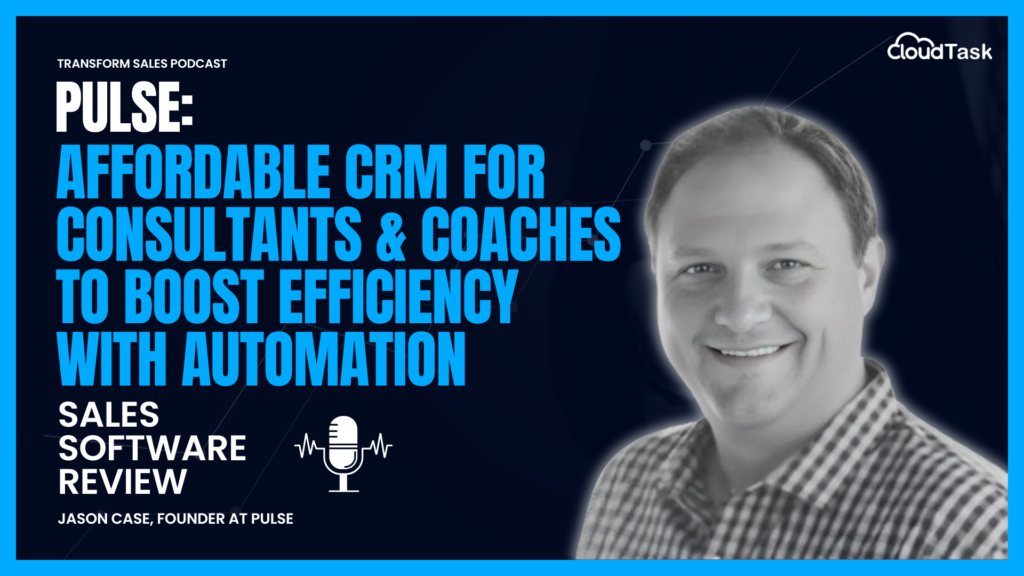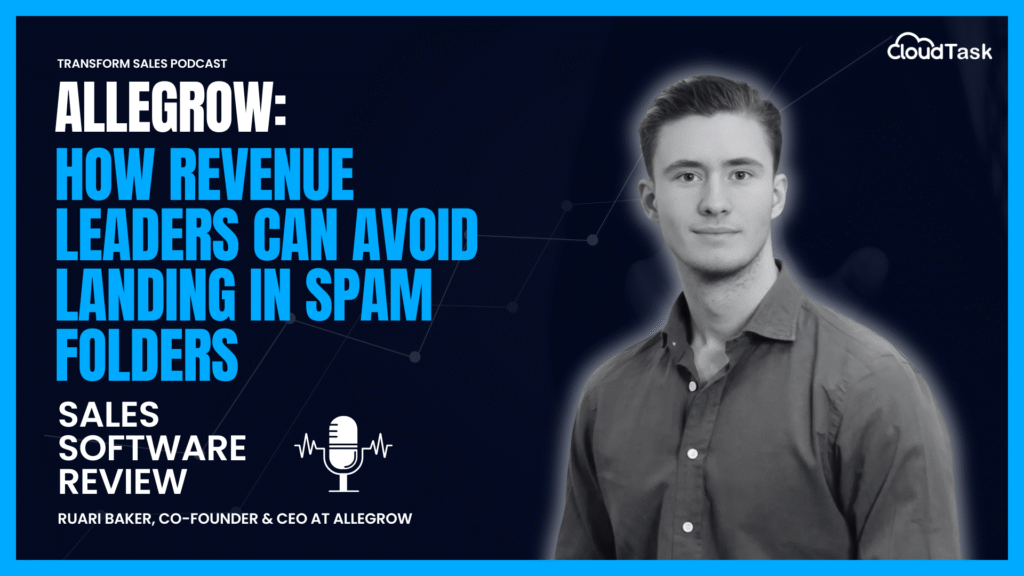In this episode of the Transform Sales Podcast: Sales Software Review Series, Eddie Bello and Jason Case talked about how coaches and consultants can use Pulse to solve the common problem of low outbound response rates.
For many solo consultants and small business coaches, managing client interactions and sales workflows can become overwhelming—especially when using scattered tools like spreadsheets, email platforms, and CRMs that charge extra for essential features. Pulse offers an easy-to-use, all-in-one sales automation CRM designed to help these professionals save time, increase conversion rates, and stay on top of every client interaction without breaking the bank.
When it comes to sales automation, what alternatives were your customers most often using before buying your software?
Before adopting Pulse, many coaches and consultants used a mix of:
Spreadsheets and Manual Tracking: Tools like Google Sheets or Excel were commonly used to track sales conversations and lead stages.
Email Automation Tools: Platforms like Mailchimp or Constant Contact helped them send basic email campaigns but lacked CRM integration.
Overbuilt CRMs: HubSpot, Keap (Infusionsoft), and ActiveCampaign were often used but considered too complex and expensive for solo users or small teams.
These tools helped in specific areas but fell short of providing a cohesive, easy-to-manage workflow. Most lacked a unified system that could streamline lead management, client communication, and automation all in one place.
What challenges were your customers running into that your software helped them overcome?
Coaches and consultants often faced three common challenges when using the above tools:
Fragmented Workflows
Using spreadsheets, email tools, and basic CRMs in parallel meant key information was often lost, duplicated, or delayed. This reduced sales velocity and increased manual work.
Cost Overload
CRMs like HubSpot or Keap became too expensive as businesses scaled. Costs rose sharply with each additional feature or module, making the tech stack unsustainable.
Lack of Follow-Up Automation
Most alternatives didn’t automate follow-ups effectively, especially in cases of cancellations or no-shows. As a result, warm leads would often go cold due to inconsistent outreach.
What are the key features of Pulse that help overcome the sales automation challenges?
How Pulse Overcomes Fragmented Workflows
Situation: Coaches and consultants need to track all lead interactions and pipeline stages without using five different tools.
Problem: Spreadsheets and disconnected systems make it hard to keep a single source of truth for client management.
Solution: Pulse combines CRM, sales automation, and marketing features in one platform. It offers real-time pipeline tracking, centralized notes, email/text automation, and integrated reporting—all accessible from a single dashboard.
How Pulse Overcomes Cost Overload
Situation: Small business owners want access to automation, email marketing, and sales reporting without spending thousands on CRM licenses.
Problem: CRMs like HubSpot and Keap charge by module and scale costs quickly as contact or user counts grow.
Solution: Pulse includes all core features—CRM, email/text automation, sales pipeline, calendar integration—at a flat rate starting at $49/month. There’s no extra fee for additional modules, and pricing scales only with contacts and users.
How Pulse Overcomes Lack of Follow-Up Automation
Situation: Solo consultants need to stay in touch with leads who cancel or miss discovery calls.
Problem: Without automation, it’s easy to forget rescheduling, causing potential deals to slip through the cracks.
Solution: Pulse offers automated reschedule sequences, triggered by status changes (e.g., “Canceled” or “No Show”). Follow-up emails and SMS are sent automatically over days or weeks, increasing the likelihood of re-engagement and conversion.
What tasks, deliverables, and/or people need to be involved in setting up your software for this job to be done and how long does it typically take to reach full productivity?
Setting up Pulse is straightforward, but your speed to productivity will depend on how clear your processes are. Here’s what’s involved:
Data Prep: Importing contact lists and any existing lead data (from spreadsheets or another CRM).
Workflow Mapping: Defining stages in your sales pipeline (e.g., New Lead, Discovery Call, Proposal Sent).
Automation Setup: Creating follow-up sequences for each sales stage. This includes emails, texts, and internal task reminders.
System Integration: Connecting your calendar, meeting software (like Calendly), and website forms.
You can manage this in-house or pay Pulse’s team for onboarding support. Most users are fully set up in 1 to 3 weeks. Pulse’s professional services range from $500 to $1,500, depending on the complexity of your setup.
Pulse also integrates with tools like Zapier and meeting scheduling platforms, so you can bring in leads from Facebook Ads, website forms, or LinkedIn DMs without manual work.
What KPIs should coaches and consultants use to evaluate their success with Pulse for sales automation, and what quantifiable outcomes can they expect?
Here are the top KPIs coaches and consultants should track when using Pulse:
Sales Conversion Rate: Measure how many leads turn into paying clients. Pulse users often see a 30%+ improvement by automating follow-ups and reducing drop-off.
Lead Response Time: Track how quickly leads are contacted after entering your funnel. With automation, this drops to near-instant.
No-Show Recovery Rate: Gauge how many canceled/no-show meetings get successfully rescheduled. Pulse’s reschedule sequences can increase recovery rates by 50% or more.
Time Saved per Rep: Coaches and small teams report saving 1–2 hours per day with automation, freeing up time for client work.
Pulse also provides visual dashboards and reports so users can easily monitor performance per lead source, campaign, or pipeline stage.
Conclusion
Pulse is an all-in-one sales CRM for consultants and coaches who want to save time, boost conversion rates, and simplify their tech stack. Whether you’re moving away from spreadsheets or downsizing from a costly CRM like HubSpot, Pulse delivers robust sales automation without the high price tag. With features like automated rescheduling, lead nurturing, and a visual pipeline, Pulse helps you turn every lead into a potential deal—without letting anyone fall through the cracks.











